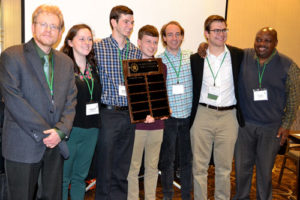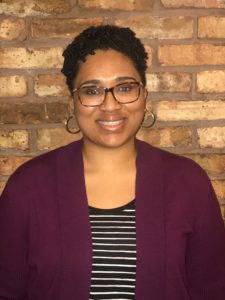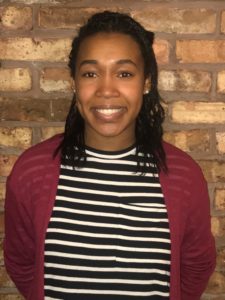The National Mall: Making Space for the Dream
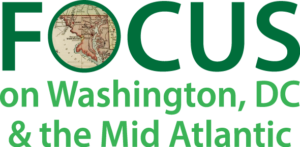 On September 24, 2016, thousands gathered on the National Mall to celebrate the grand opening of the National Museum of African American History and Culture. The building is distinctive: the bronze-meshed ziggurat moves upwards towards the sky and into the light. Inside the new 400,000 square foot museum are some 36,000 artifacts that share truths about America’s past and tell stories about 400 years of of black life in America. The new museum allows Americans to walk the path from slavery to civil rights to the Black Lives Matter movement.
On September 24, 2016, thousands gathered on the National Mall to celebrate the grand opening of the National Museum of African American History and Culture. The building is distinctive: the bronze-meshed ziggurat moves upwards towards the sky and into the light. Inside the new 400,000 square foot museum are some 36,000 artifacts that share truths about America’s past and tell stories about 400 years of of black life in America. The new museum allows Americans to walk the path from slavery to civil rights to the Black Lives Matter movement.
As much as what we will learn and experience because of what is inside the museum, the mere presence of this museum on the Mall also makes a difference.
It’s all about “location, location, location.” The Mall is a stage for our democracy, a place we tell our national story. Being “on the Mall” makes a powerful statement about a shared identity, about belonging and about recognition. It confers national legitimacy. It’s the reason that each year dozens of groups lobby for their memorial or museum to be on the Mall. Finally, in the last several years, the Mall has become “a space,” both metaphorically and literally, for African Americans.
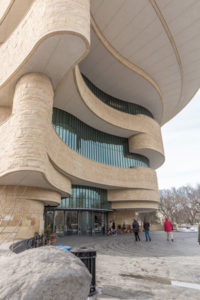
Both the National Museum of African American History and Culture (NMAAHC, said aloud as neh-MOCK) and the recently completed 2014 memorial to Martin Luther King, Jr.—also on the Mall—mean the African American story is accessible and integral. Each has extended our national narrative to include the contributions of African Americans. At the dedication ceremony for the National Museum of African American History and Culture, then President Obama noted “This national museum helps to tell a richer and fuller story of who we are.” And he is right. Because of these new additions, including the 2004 opening of the National Museum of the American Indian, the Mall now reflects a national history that includes a wider, more racially and ethnically diverse society. Visitors to the new museum are reminded of this by the quote from Langston Hughes: “I, too, am America.”
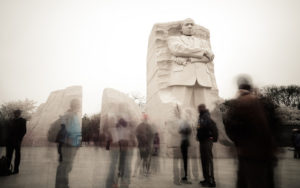 The Martin Luther King Jr. Memorial represents a significant departure from other memorials on the Mall. It is the first to commemorate an African American, and by extension, the first memorial to recognize and legitimize the modern Civil Rights Movement. Civil rights memorials are a litmus test for how far society has progressed towards the goal of racial equality and justice and to what degree society has fulfilled the Civil Rights Movement’s goals. And while there are many other memorials to Martin Luther King Jr. around the country, the MLK Memorial on the Mall confers a national legitimacy on the Civil Rights Movement and its objectives.
The Martin Luther King Jr. Memorial represents a significant departure from other memorials on the Mall. It is the first to commemorate an African American, and by extension, the first memorial to recognize and legitimize the modern Civil Rights Movement. Civil rights memorials are a litmus test for how far society has progressed towards the goal of racial equality and justice and to what degree society has fulfilled the Civil Rights Movement’s goals. And while there are many other memorials to Martin Luther King Jr. around the country, the MLK Memorial on the Mall confers a national legitimacy on the Civil Rights Movement and its objectives.
New additions to the Mall transform the meaning of this public space in the heart of the nation’s capitol. The MLK Memorial boldly challenges the Mall’s dominant narrative that is devoted largely to national identity and national history as defined and embodied mostly by white men (the Washington, Lincoln, Jefferson, FDR, Grant memorials), and a white heritage reflected in Greco-Roman architecture. The MLK Memorial is a critical development in commemoration on the Mall because it reflects a new writing of the basic principles of equality, rights, and justice.
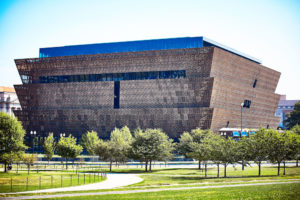
The National Mall is an extraordinary public space that mirrors our national narrative of who we are and how we came to be. As we have embraced a more inclusive history, commemoration and expressions of national identity have also changed. The new National Museum of African American History and Culture, The MLK Memorial and the Museum of the American Indian correct the implicit bias on the Mall towards a narrow definition of national history and national memory that has ignored minorities. Visitors to the Mall now see a place that more closely reflects the diversity of our nation and our national experience.
These recent additions on the Mall remind us about the power of public spaces to tell these new national narratives. The National Museum of African American History and Culture and the MLK Memorial are more than just buildings or statues. They represent the dream for equality, and justice, and a full inclusive democracy. The Mall has become a space for that dream to come true.
Lisa Benton-Short is Professor and Chair of the Department of Geography at George Washington University, Senior Fellow with the Sustainability Collaborative and the author of the 2016 book The National Mall: No Ordinary Public Space
DOI: 10.14433/2017.0040
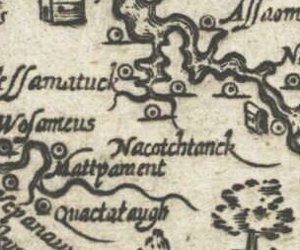
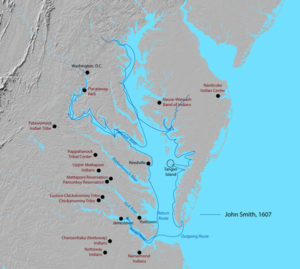
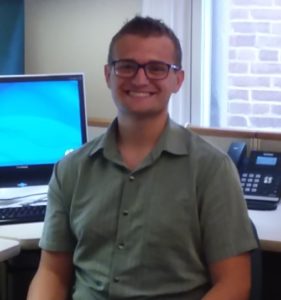 Alex Lafler is a Junior at Michigan State University pursuing a BS in Geographic Information Science and a BA in Human Geography (along with a Minor in Environment and Health). Alex previously interned at the St. Joseph County Land Resource Centre (Centreville, MI). After Graduation, Alex hopes to pursue a career in GIS or a related field. In his spare time, Alex likes to watch movies and sports (Go Green!), walk as much as he can, and create videos and podcasts.
Alex Lafler is a Junior at Michigan State University pursuing a BS in Geographic Information Science and a BA in Human Geography (along with a Minor in Environment and Health). Alex previously interned at the St. Joseph County Land Resource Centre (Centreville, MI). After Graduation, Alex hopes to pursue a career in GIS or a related field. In his spare time, Alex likes to watch movies and sports (Go Green!), walk as much as he can, and create videos and podcasts.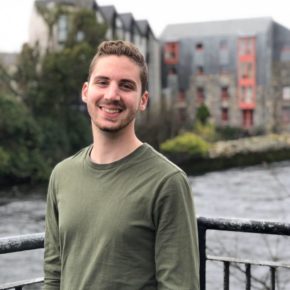 Christian Meoli is a senior at the University of Mary Washington, double majoring in Geography and Environmental Science with a certificate in GIS. He has interned for the town planning departments in his hometown of Maryland and in his college town in Virginia. Most recently he interned for the Sierra Club in Boston where he explored urban environmental geography. He hopes to bring his academic perspective and enthusiasm for geography to the AAG. In his spare time he enjoys traveling, hiking, and playing tennis.
Christian Meoli is a senior at the University of Mary Washington, double majoring in Geography and Environmental Science with a certificate in GIS. He has interned for the town planning departments in his hometown of Maryland and in his college town in Virginia. Most recently he interned for the Sierra Club in Boston where he explored urban environmental geography. He hopes to bring his academic perspective and enthusiasm for geography to the AAG. In his spare time he enjoys traveling, hiking, and playing tennis.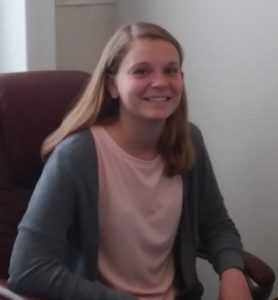 Jenny Roepe is a rising senior at Virginia Polytechnic Institute and State University, pursuing a B.A. in geography with a minor in geographical information systems and urban and public issues. Last summer Jenny interned for the Fairfax County Park Authority Planning and Development Division. During her time at FCPA, she designed trail maps using GIS software. The maps were posted for public use at various parks in Fairfax County. After graduation, Jenny hopes to pursue a career that combines her passion for the environment with her skills and background in Geographical Information Systems. In her spare time, Jenny likes to read, hike and travel to new places.
Jenny Roepe is a rising senior at Virginia Polytechnic Institute and State University, pursuing a B.A. in geography with a minor in geographical information systems and urban and public issues. Last summer Jenny interned for the Fairfax County Park Authority Planning and Development Division. During her time at FCPA, she designed trail maps using GIS software. The maps were posted for public use at various parks in Fairfax County. After graduation, Jenny hopes to pursue a career that combines her passion for the environment with her skills and background in Geographical Information Systems. In her spare time, Jenny likes to read, hike and travel to new places.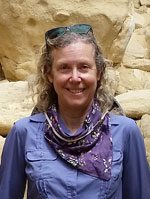

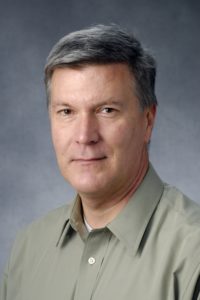 Barney Warf is the current Editor for The Professional Geographer and a Professor of Geography at the University of Kansas. His professional interests lie within the broad domain of human geography. Much of his research concerns information technology and telecommunications, notably geographies of the internet, including fiber optics, the digital divide, and e-government. He has also written on military spending, electoral geography, religious diversity, cosmopolitanism, and corruption. While most of his research involves secondary data, Barney’s most memorable research experiences have involved doing interviews in Latin America, particularly in Panama and Costa Rica, that added a human depth to the topics he researched. He has authored, co-authored, or co-edited eight research books, three encyclopedias, three textbooks, 50 book chapters and more than 100 refereed journal articles.
Barney Warf is the current Editor for The Professional Geographer and a Professor of Geography at the University of Kansas. His professional interests lie within the broad domain of human geography. Much of his research concerns information technology and telecommunications, notably geographies of the internet, including fiber optics, the digital divide, and e-government. He has also written on military spending, electoral geography, religious diversity, cosmopolitanism, and corruption. While most of his research involves secondary data, Barney’s most memorable research experiences have involved doing interviews in Latin America, particularly in Panama and Costa Rica, that added a human depth to the topics he researched. He has authored, co-authored, or co-edited eight research books, three encyclopedias, three textbooks, 50 book chapters and more than 100 refereed journal articles.
